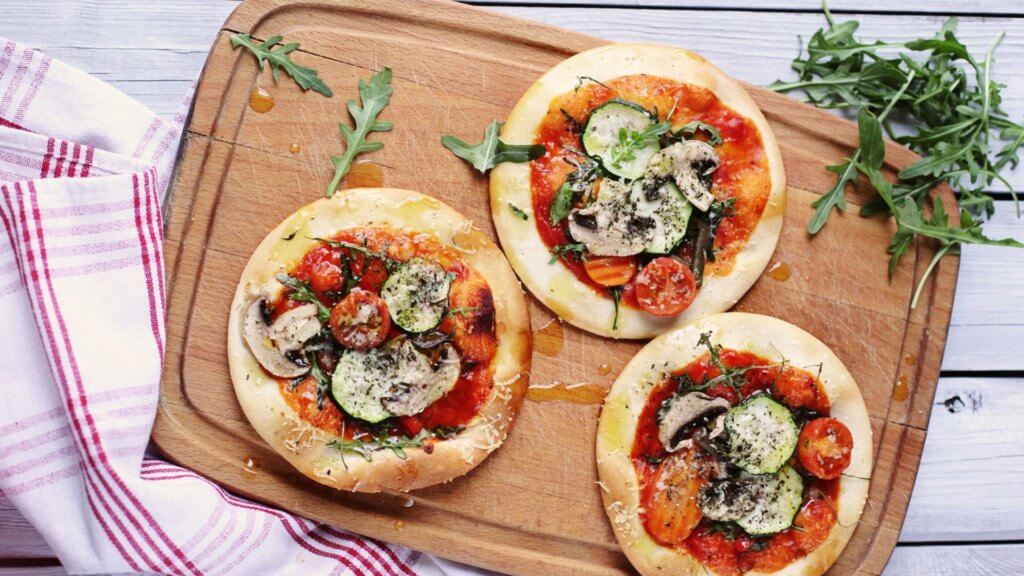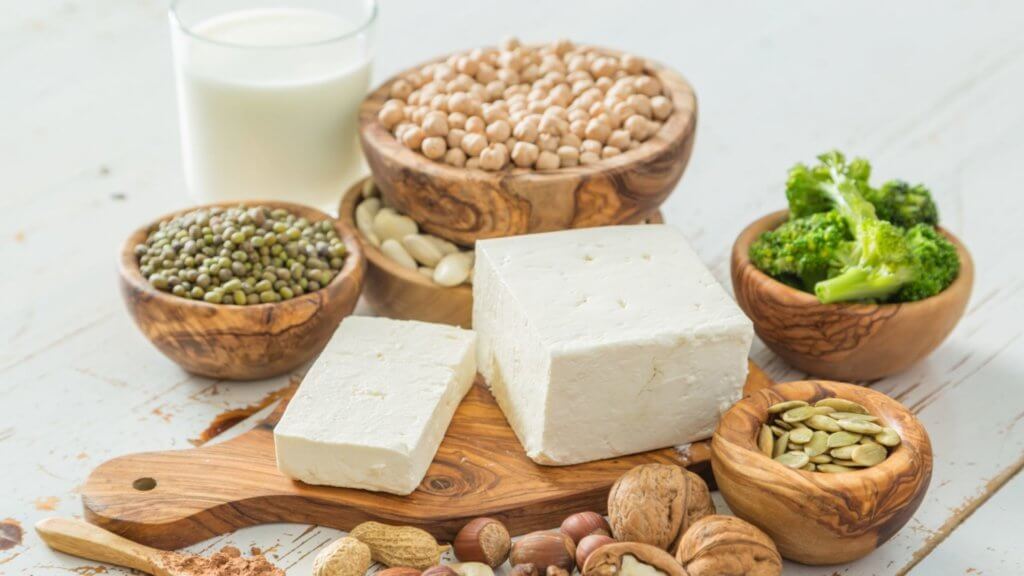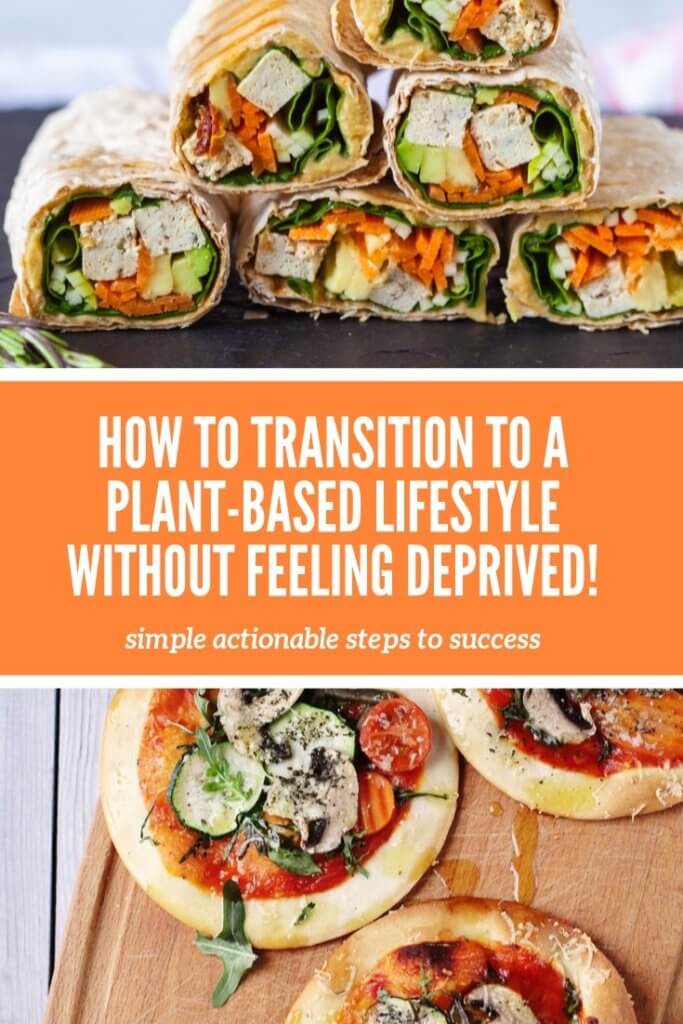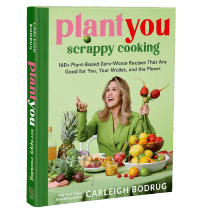How to Start Eating Plant-Based (Without Feeling Deprived!)
NOTE: The focus of this article is on how to transition to a whole-foods, plant-based diet. In other words, we’re talking about tips for transitioning to a diet rich with fruits and veggies, whole grains, beans and lentils, and nuts and seeds, NOT a vegan diet of potato chips, oreos, and candy.

When first embarking on a plant-based journey (or virtually any new diet, for that matter), we tend to lament all the things we can’t eat anymore — no more eggs, no more cheese, no more chicken tenders. While there are some pretty tasty plant-based alternatives to our favorite animal products, we can’t help but feel like we’ve lost something, and that we’ve resorted to a life with less freedom and pleasure.
To make matters worse, this negative framing of the plant-based diet tends to heighten our desires for non-plant-based foods (it’s basic human nature to want something more when we’re told we can’t have it!).
In short, it’s common to feel frustrated, dissatisfied, and even resentful. Even if you’re 150% confident in the benefits of plant-based eating, it’s hard to keep doing something that makes you feel this way!
The good news is that you don’t have to feel this way. With the right approach and mindset, adopting a plant-based diet can be a fun, enjoyable, and fulfilling journey.
tip #1: add, don’t eliminate
When first transitioning to a plant-based diet, don’t cut out anything. (Yes, you can keep eating your eggs and your cheese and your chicken tenders!)
Instead, add things in. Maybe you add a serving of broccoli to your normal dinner, or a fruit to your breakfast. Maybe you have a side salad with your lunch, or some baby carrots and hummus with your afternoon snack.
You may need to adjust your portions of other foods to make room for these additions, but they key is to focus on adding to, not eliminating from your diet.
Not only does this non-restriction approach make the transition much easier from a psychological perspective, but it also gives our bodies (including our taste buds!) time to adjust to this new way of eating. Gradually, plant-based foods will become more and more appealing to you; you’ll crave their flavors and the way you feel when eating this way. Before you know it, the animal products you thought you couldn’t survive without will fall naturally out of your diet.

tip #2: make healthy replacements
In addition to adding plant-based foods into your diet, experiment with making healthy replacements. As with the “add, don’t eliminate” approach, making healthy replacements is a great way to shift your diet in a healthy and sustainable way, without triggering the scarcity mindset that feeds binges and feelings of deprivation.
Some examples:
- White flour tortillas → whole grain tortillas
- White pasta → whole grain pasta
- White rice → brown rice
- Fried chips → baked chips
- Sugary cereal → less-sugary cereal
Importantly, you don’t have to jump immediately from white bread to organic spelt berries; instead, focus on small steps you can take to improve your diet.

tip #3: shift your perspective
Treating plant-based eating as an opportunity, rather than a loss, is another great way to reframe the diet.
Let’s say that everyday you used to eat an ounce of cheese, 2 eggs, a yogurt, and a standard serving of chicken breast. That’s over 500 calories (more than a quarter of what most of us need in a day). When transitioning to a plant-based diet, you can focus on the loss (“I can’t eat these things anymore!”), or you can focus on the gain (“I now have 500 extra calories to spare for trying new/different foods!”).
It’s so easy to focus on what plant-based eating limits. But, for many people, plant-based eating is a powerful motivation to explore and try new foods. (I, for one, never would have explored the amazingness that is nutritional yeast if I hadn’t explored plant-based eating.)
So get creative and use this transition as an opportunity to explore. (And if you need extra guidance, a plant-based meal plan like Plant You’s Meal Prep Program can be a great addition to your lifestyle!)
tip #4: be flexible
While some people do best with the “all or nothing” approach, most of us do not. If you are like most of us, give yourself permission to be flexible and figure out what works for you. Some of the strategies I’ve heard:
- Have a cheat day. Eat plant-based 6 days a week, and eat whatever you want on the 7th.
- Have a cheat meal. Eat plant-based for all but one meal of the day.
- Don’t put a label on it. Eat plant-based most of the time, but allow yourself to indulge in the occasional bowl of ice cream.
Ultimately, experiment with different strategies, and do what works best for you.
tip #5: connect with your “why”
Even if you utilize the tips above, transitioning to a plant-based diet will likely present some challenges, and you’ll hit moments in which you’ll be tempted to give up. To get past these moments, it’s critical that you’re clear on what your motivation for plant-based eating is to begin with.
Some things to think about:
- Why do I want to eat plant-based? (Some examples: reduce environmental footprint, reduce harm to animals, improve health.)
- Why do I want to make this change now?
- How committed am I to make this change?
- What am I willing to do to this happen? What am I *not* willing to do?
- What might get in the way or make this challenging? How might I mitigate those obstacles?
It may also be beneficial to brainstorm ways to regularly connect with your motivation for change. As an example, if you’re adopting a plant-based diet to improve your health, maybe you take some time to journal regularly about the positive effects you feel from eating plant-based. When your motivation is low, revisit this list and remind yourself of how amazing this way of eating makes you feel!
All in all, plant-based eating has so many positive benefits for ourselves and for the world around us. Hopefully these tips make it a little easier to incorporate plant-based eating into your lifestyle.
What motivated you to start eating plant-based? What strategies helped you make the transition?
Written by Dominique Alessi. Dominique is a ballerina-turned-computer scientist-turned health coach. Her mission is to help hard-working professionals re-prioritize their health so they can unleash their best selves. Sign up for her email newsletter for more tips, tricks, and resources to help you live a simpler, healthier life.
Need help with your plant-based lifestyle? Join Plant Ahead HERE and get immediate access to our simplistic, whole-foods, plant-based beginner-friendly recipes and meal plans!


